Pipe Spring National Monument has a loom. They have had a loom for a long time, but this is the first year they have used it since, perhaps, 1995. A loom sat on the upper balcony for a long time and we have pictures of some volunteers preparing it for weaving in 1995. But that loom fell apart and another one was donated to the park. The second loom has been sitting in a garage, waiting for someone who knew how to prepare it for weaving.
That someone is certainly not me. Although I bought a small loom years ago, warping it was so boring and tedious that I never got around to weaving on it. I gave it away shortly after that. Instead, someone from Pipe Spring discovered that one of the rangers at Zion is a weaver. They requested that Ranger Sarah come down to Pipe Spring and help us put together a working loom.
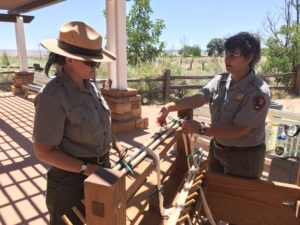
The first step in preparing the loom for weaving was getting it out of the garage and into a place we could use it. The loom is very large – as big as my living room in the RV – and it took all the maintenance men to move it from the garage to the back porch of the Visitors Center. After moving it, Ranger Sarah looked it over and realized we needed new heddles. The old ones were rusted and would catch the yarn when warping or weaving, so she ordered new ones.
Ranger Sarah made 172 warping strings by wrapping them around her warping board at home. Each string is 18 feet long and they all have to be put on the loom without twisting. Ranger Sarah, Pipe Spring Ranger Sarah, and I spent two days getting the warping strings put on the machine. Then Ranger Sarah put Tom to work fashioning some new pieces that were missing. Until you have someone who understands all the pieces parts, you don’t know what you are missing.
It turns out that the new heddles weren’t the right length. They were 1/8″ too long, which doesn’t sound like much until you see them not sliding on the shafts because of the extra length. So Pipe Spring Ranger Sarah cleaned and scrubbed all the old heddles (about 250) until all the rust was gone. She did a great job and it was a lot of work.
Finally, after four days, the four of us got the loom warped and ready to use. The Pipe Spring curator wants new rag rugs for Winsor Castle, so that is what we are making on the loom. Ranger Sarah showed me how to work the treadles and the shuttle and returned to Zion.
Since she left, three of us have been using the loom in weaving demonstrations. The loom sits right outside the back door of the Visitors Center and all our guests pass by on their way to Winsor Castle. Weaving draws them right in, as they walk over to see how it works and what we are making. I showed Pipe Spring Ranger Sarah and Ranger Theresa how to do the weaving and we already have three of the rugs finished. Weaving is the easy part compared to the time-consuming warping.
Steps in warping: 1. Wrap the strings to the proper length on a warping board. 2. Tie the strings so they won’t get tangled. 3. Wrap the strings on the warping beam. 4. Thread each string through the eye of one heddle, making sure not to twist the strings. 5. Put each string through a space on the reed (called sleying the reed). 6. Wrap the strings around the cloth beam.
Once you have done all this (remember, there are 172 strings) you need to prepare the weft. The warp are the long strings that determine the finished length of a project. The weft is the part you weave, moving a shuttle back and forth through the strings. Wefting requires tearing long strips of cotton and winding them on a shuttle.
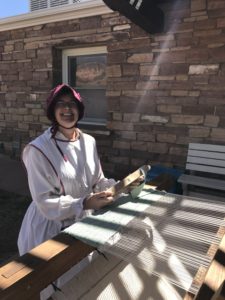
Weaving is the easiest part. I can weave a foot of rug in less than an hour. I press down two treadles which raises the shafts with half the strings and pass the shuttle through. Then I make sure my tension is correct and I am under the selvage strings at the side. I return the treadles to a neutral position and pull the beater bar forward, mashing the cotton strings down so there aren’t any gaps. Then I press down the two opposite treadles and send the shuttle through in the opposite direction. This process continues until we are finished or until we start talking to a guest.
Learning to weave has been an interesting experience. Although I can quickly make progress in my weaving, I have yet to find a rhythm that makes it enjoyable. And I can’t imagine figuring out how to warp the loom again. Ranger Sarah will have to return when it is time to rewarp. Until then I will continue to weave and talk to guests and look very historical as I do.

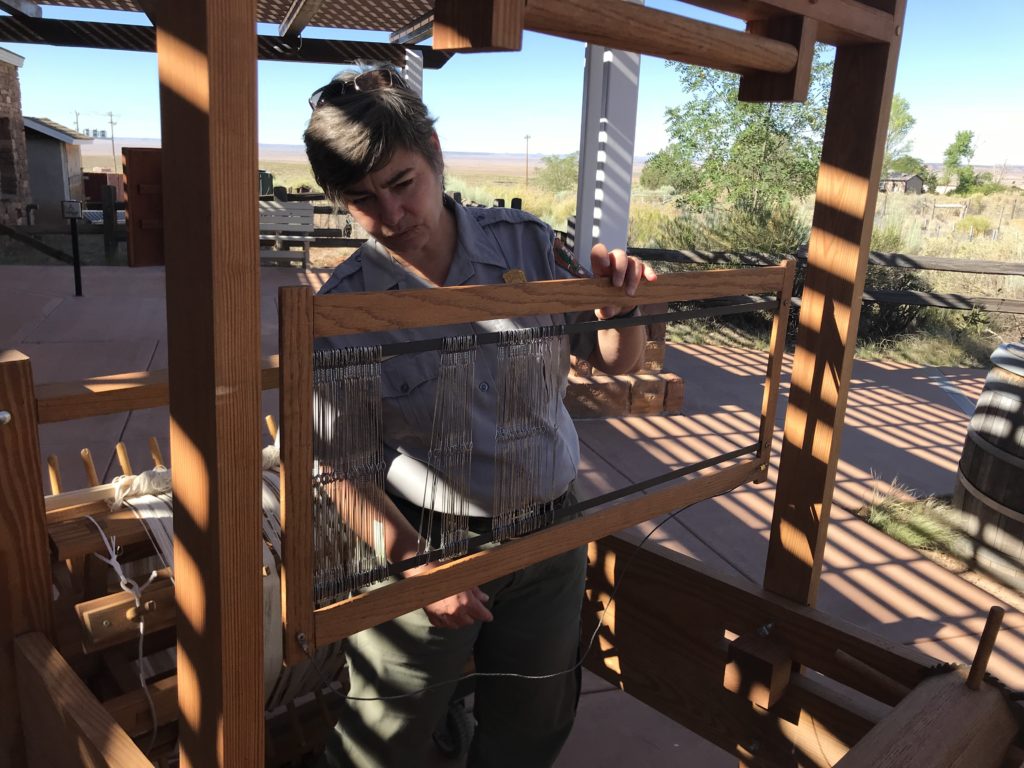
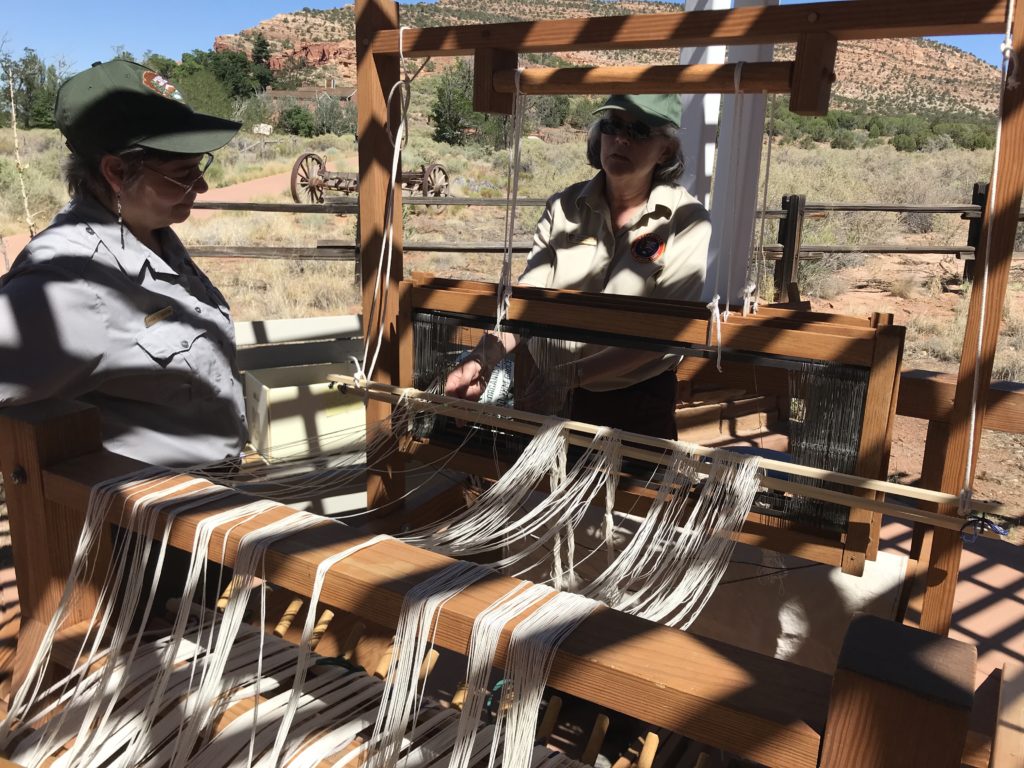
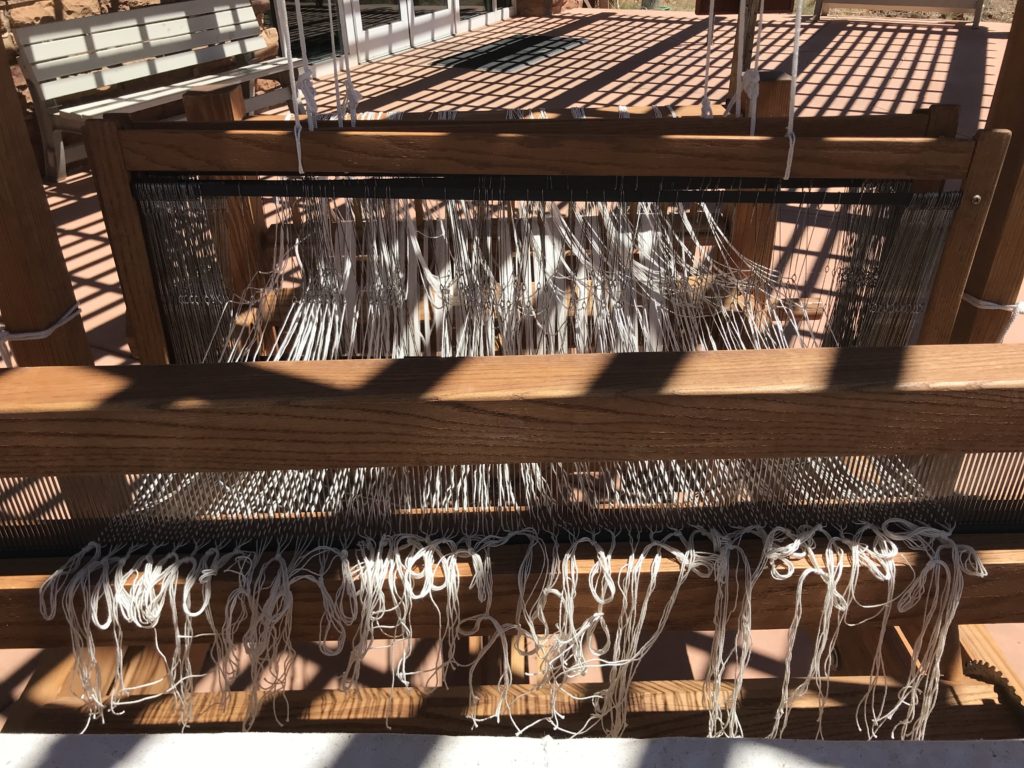
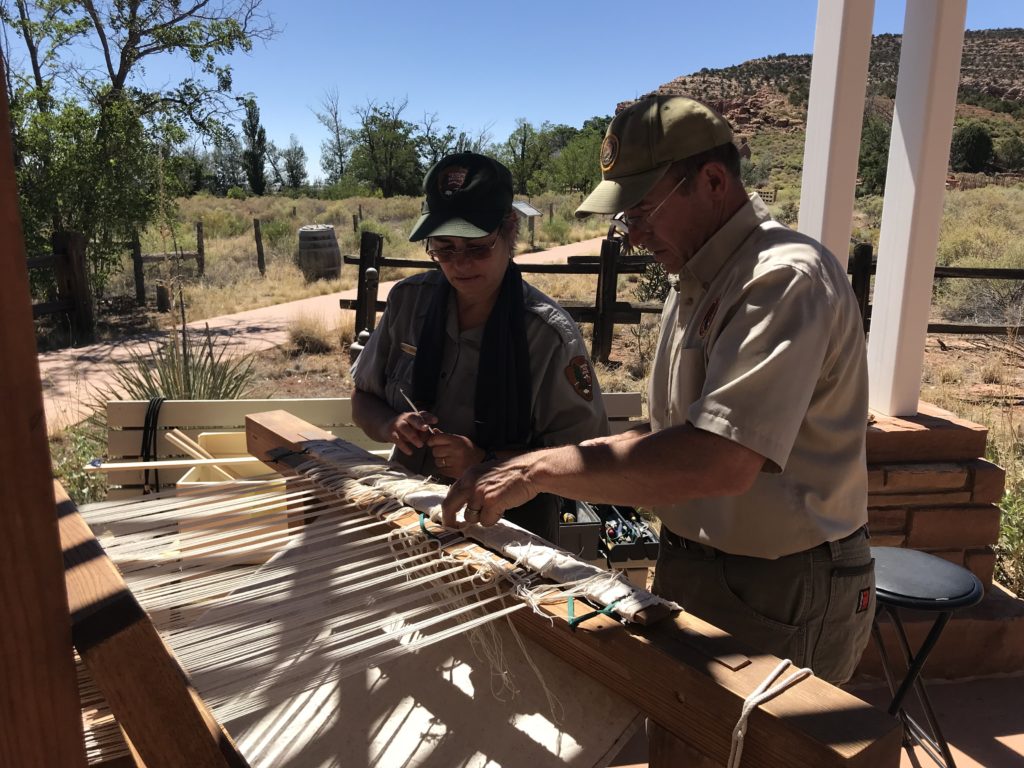
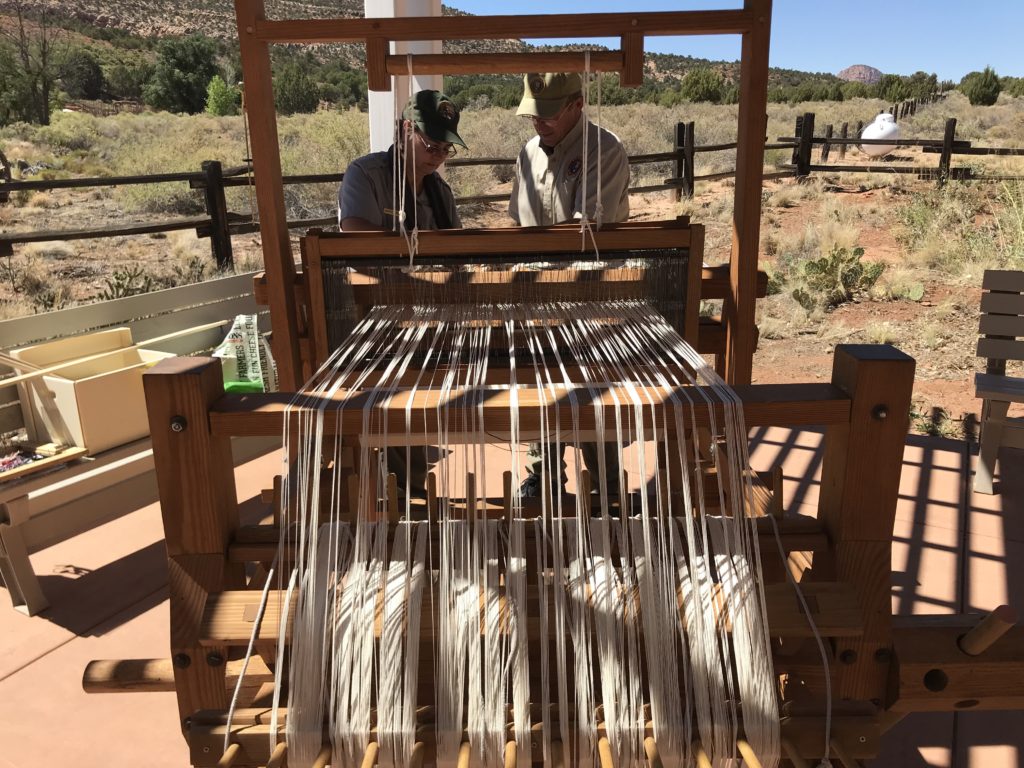
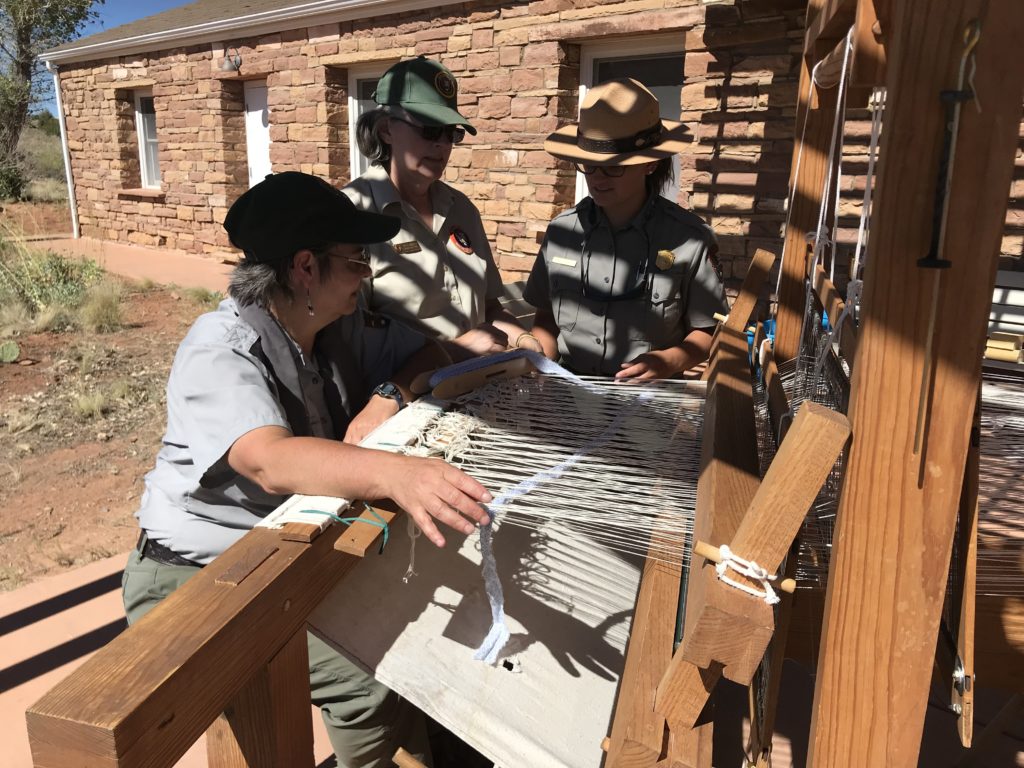
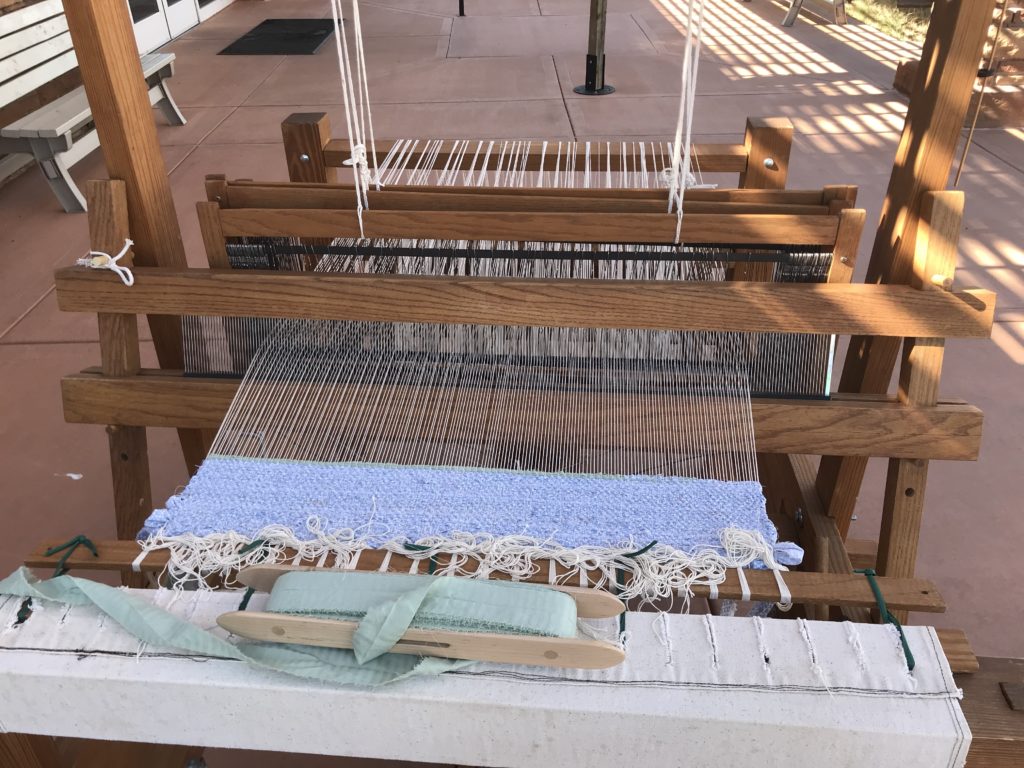
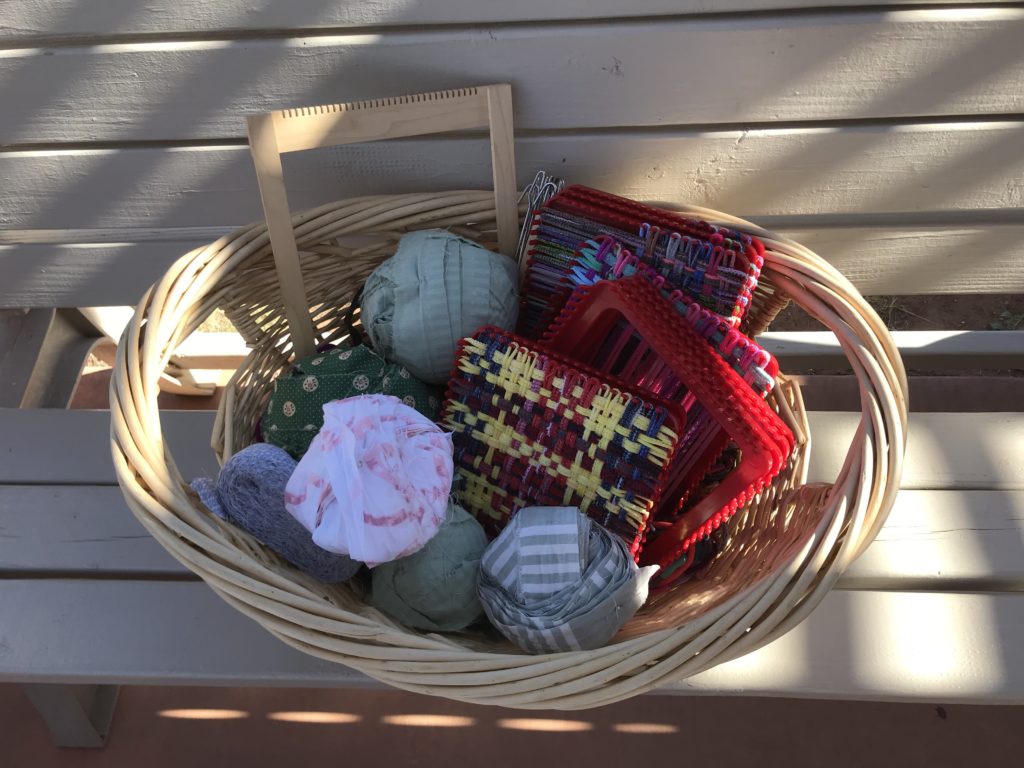
One comment